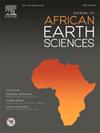东地中海Kasaba和Aksu-Gebiz盆地新近纪沉积演化与生物地层学:来自古生物学和Sr同位素地层学的启示
IF 2.2
4区 地球科学
Q2 GEOSCIENCES, MULTIDISCIPLINARY
引用次数: 0
摘要
ka本文章由计算机程序翻译,如有差异,请以英文原文为准。
Neogene sedimentary evolution and biostratigraphy of the Kasaba and Aksu-Gebiz basins in the eastern Mediterranean: Insights from paleontology and Sr isotope stratigraphy
The Kaş-Kasaba and Aksu-Gebiz basins are two important Neogene basins in the Eastern Mediterranean, flanking the Gulf of Antalya in southwestern Anatolia. Comprehensive studies involving sedimentology, paleontology, and Sr isotopes have offered valuable insights into the sedimentary characteristics and depositional environments of these basins during the Neogene period. In the west, the Kasaba Basin features an early to middle Miocene carbonate-clastic succession that developed on the Late Cretaceous Beydağları autochthon, overlain by Paleocene-Eocene neritic carbonates. In contrast, the Aksu-Gebiz Basin in the east presents a transgressive sequence of middle Miocene to Pliocene clastics and carbonates, which developed on different basement units, including the Mesozoic metamorphosed carbonates and the Antalya Complex in the west. Biostratigraphic studies in the Kasaba (Kaş) region revealed 9 genera and 23 species of planktonic foraminifera in the Kasaba Formation, and 12 genera and 29 species in the Sinekçi Fm., marking the lower boundary of the Orbulina suturalis Lineage Subzone (MMi5a) of the middle Miocene. Similarly, in the Gebiz (Aksu) region, the planktonic foraminifera indicate the lower boundary of the MMi12a Globigerinoides obliquus extremus-Globorotalia suterae Interval Subzone of the late Miocene. Benthic foraminifera indicative of shelf environments were identified in both regions. Whole-rock strontium isotope chemostratigraphy revealed ages ranging from 14.3 to 23.7 Ma based on 87Sr/86Sr ratios from three key samples. Overall, studies in the Kasaba Basin suggest a lower to middle Miocene age with shallow marine environments, consistent with Serravallian to Langhian periods. In the Aksu-Gebiz Basin, detailed investigations of the Karpuzçay Formation identified a mid-Tortonian age. This age, combined with sedimentological and structural data, provides insights into the basin's tectonic evolution and flexural effects. Planktonic and benthic foraminifera within the sequence reflect inner shelf environments throughout. The strontium isotope analysis of samples from the Aksu-Gebiz Basin revealed significant variations in 87Sr/86Sr ratios, with ages ranging from the Tortonian (9.0 Ma) to the Messinian (5.3 Ma). By integrating biostratigraphy and whole-rock Sr isotope stratigraphy, this study refines the Neogene chronological framework of the Kasaba and Aksu-Gebiz Basins, providing new insights into the Eastern Mediterranean's geological history. These findings also improve stratigraphic correlations with adjacent basins, offering a more comprehensive regional context.
求助全文
通过发布文献求助,成功后即可免费获取论文全文。
去求助
来源期刊

Journal of African Earth Sciences
地学-地球科学综合
CiteScore
4.70
自引率
4.30%
发文量
240
审稿时长
12 months
期刊介绍:
The Journal of African Earth Sciences sees itself as the prime geological journal for all aspects of the Earth Sciences about the African plate. Papers dealing with peripheral areas are welcome if they demonstrate a tight link with Africa.
The Journal publishes high quality, peer-reviewed scientific papers. It is devoted primarily to research papers but short communications relating to new developments of broad interest, reviews and book reviews will also be considered. Papers must have international appeal and should present work of more regional than local significance and dealing with well identified and justified scientific questions. Specialised technical papers, analytical or exploration reports must be avoided. Papers on applied geology should preferably be linked to such core disciplines and must be addressed to a more general geoscientific audience.
 求助内容:
求助内容: 应助结果提醒方式:
应助结果提醒方式:


